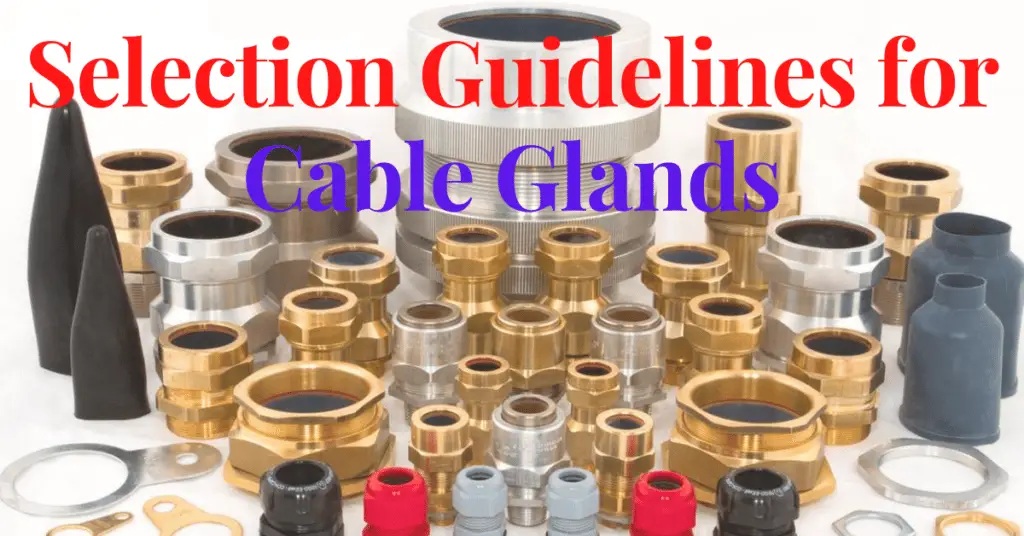The selection guidelines for the cable glands is very important for selection of glands for a particular application. The cable gland selection depend on factors like types of cable, cable diameter , application and many more. The cable gland is absolutely necessary for protection of wire and cable termination. In this article, we will discuss the various criteria for selection of cable glands.

The proper selection of the cable gland is very important for making a reliable electrical system. The type of gland, its size, gland material & many other gland data are important for selection of cable gland for a particular application. Therefore, it is a must to understand the selection criteria of cable glands.
Cable Glands Selection Criteria
The followings are the selection Guidelines for cable gland.
1. Type of Cable
Each type of cable used for an application requires different types of gland. For example, the portable electrical equipment needs a flexible cable because flex cables are good for constant and repeated motion.
In this application, certain types of cable gland can protect the inherent conductor fatigue. Another example- We use shielded cables for Inverters & VFD. The gland used for VFD must have capability to provide the ground path for EMC protection. The glands such as SAB EMC-2 and EMC-4 are suitable for VFD panel. A single core cable needs an aluminum gland to prevent the over-heating of the gland due to circulation current.
Therefore, the selection of cable glands depends on the type of cable in use.
2. Cable Diameter
The cable diameter determines the gland’s hole diameter for proper cable feedthrough. The improper selection of gland cause wrong fitment which may further leads to conductor damage.
3. Application Environment
The Cable glands also provides protection against dust, vapors, temperature, vibration, shock, impact and explosion. Therefore, while selecting glands for such applications, we must consider all these factors.
4. Material requirements
The selection of gland materials is very important, and the gland’s material should provide enough resistance to environmental factors like dust, moisture, shock & vibration etc. For example, a gland used in a electrical panel operating at high vibration must remain intact and there should be no coldflow.
5. Approvals
We need approval of the cable gland from a specific standards organization and local approvals especially where human safety is paramount. The cable gland used in a flammable environment must meet the criteria as per the UL 94V-2 .
The cable glands used in outdoor application where it is exposed to dust and water must compliant to IP 68 ingress protection. Cable glands should also have UR, cUR, UL and CSA marks for use in the United States and Canada.
6. Earth Tags
Earth tags provide an earth bond attachment for cable glands. The application that needs immediate discharge of energy from cable gland to ground in the event of fault must have earth tag.
7. Thread Seal
Check whether application needs an entry thread seal for IP66 (or IP67/IP68) conditions.
8. Locknuts and Serrated Washers
The locknuts and serrated washers are the fixing accessories of cable gland. Ensure these fixing accessories are required for a gland system.
9. Single Seal or Double Seal
The corrosive and moisture vapor can enter through the gland and impact the cable in a single seal gland. We can use the weatherproof double compression cable glands if glands function in a dusty environment. The selection of the gland must be done accordingly.
10. Check the type and size of the cable entry hole in the mating electrical equipment.
11. Consider if protective plating is required for the cable gland.
12. Check the size and type of armour or braid.
13. Consider the short circuit fault current rating of the cable armour.
14. Check the actual diameter of the inner bedding.
15. Consider the actual diameter of the lead covering.
For applications of cable glands in Hazardous Areas, there are special considerations that must be taken into account to ensure compliance with national or international codes of practice.
Read More: